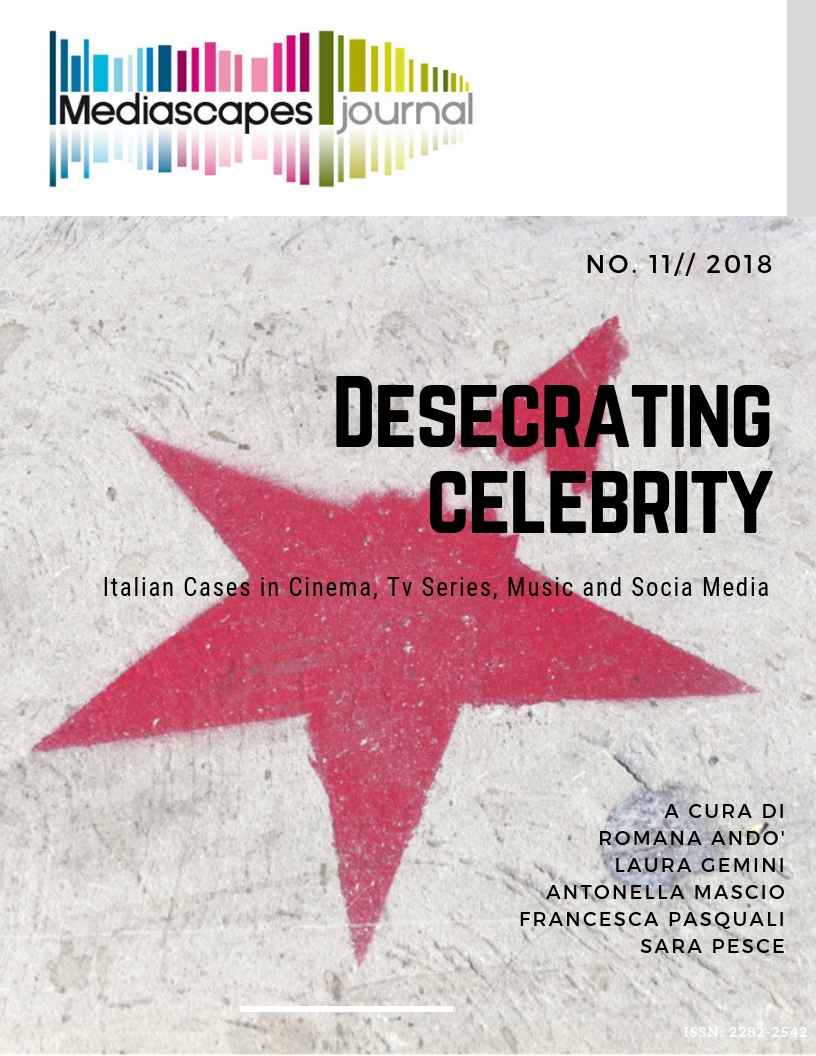The Pope-celebrity and the role of cinema
Abstract
Cinema, in particular the auteur one, often offers a dense and sometimes visionary reflection on the processes of constitution and medial recognition of celebrities, some religious figures included, helping us to understand the depth of these phenomena also in relation to the different moments of history and of media development. The essay proposes a first exploration of this vast topic focusing on the analysis, conducted with semiotic instruments, of two texts considered prime examples in this sense, linked through the theme of the relation between worldliness and religion, as well by the direct connection of inspiration between the two directors. We refer to the historical sequence "The Princess Domitilla" from Roma (1972) by Federico Fellini and to the television series The Young Pope by Paolo Sorrentino (2016). In the first one, the link between sacralization and desacration is widely and provocatively explored, through the hyper-Baroque imaginary of an Ecclesiastical fashion show occurred in the heart of the Roman "Black nobility". Fellini already in the Dolce Vita (1960) staged the role of the media – especially the gutter press and the beginnings of television – in the construction of mass "fanaticism" phenomena, both worldly and religious. In the TV series created and directed by Paolo Sorrentino, The Young Pope, on the other hand, the question of the Pope as celebrity is explicitly addressed and theorized at different levels, starting with the choice of the lead actor, Jude Law, who emphasizes this theme.
Downloads
Published
How to Cite
Issue
Section
License
Mediascapes Journal is published under a Creative Commons Attribution Licence 4.0.
With the licence CC-BY, authors retain the copyright, allowing anyone to download, reuse, re-print, modify, distribute and/or copy their contribution. The work must be properly attributed to its author. It should be also mentioned that the work has been first published by the journal Anuac.
Having published these contributions for the first time, Mediascapes Journal will have the right to publish them integrally or partially as reprints or possibly as part of a thematic issue, in both digital and printed format.
It is not necessary to ask further permissions both to author or the journal.


